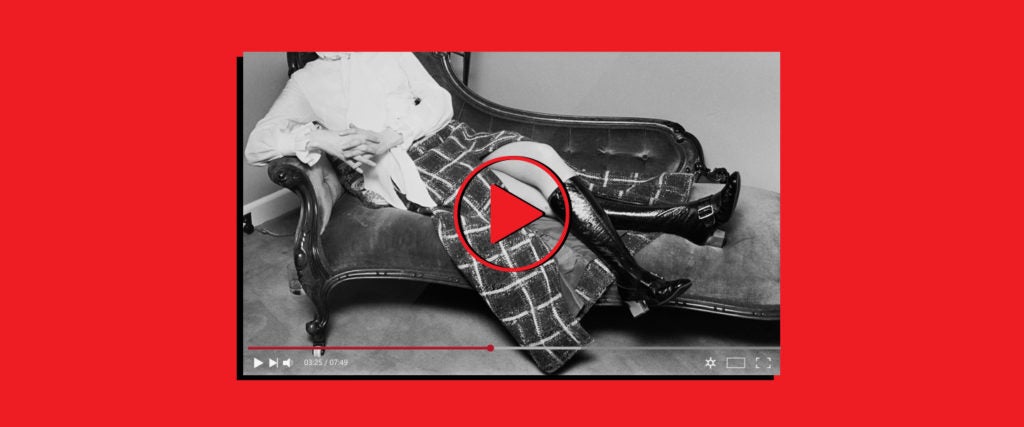Dave is 37, divorced and under-employed, trying to figure out what’s next after a decade of working in advertising. While he’s attempted to maintain his sanity living alone in quarantine, his sleep has become increasingly erratic. His diet has also gotten bad, and worst of all, he tells me, “I think my dog is getting sick of my shit.”
After losing his temper on the phone with Verizon customer service, he found himself smoking weed and heading down a rabbit hole of YouTube therapy videos. Specifically, he loved a video from a marriage and family therapist named Kati Morton about the signs of high-functioning depression, or dysthymia. “When she mentioned insomnia and irritability, I was like, ‘Oh this is me,’” he says. Though her video stresses individual talk therapy as a crucial intervention, Dave insists this is enough for him right now. “It helps to learn a bit more about how my brain works, and reading the comments is a good reminder that a lot of other people struggle with the same thing,” he explains.
According to Morton, when she first started her channel in 2011, the audience was more than 90 percent women. But as she’s expanded from focusing on eating disorders (her specialty) to “issues that hide in the shadows that people maybe don’t feel like they can ask about in person,” the gender breakdown of her now 1 million strong YouTube following has shifted to 60/40 women to men. “Going online gives men a different way because they can anonymously access these resources,” says Morton, who has also written a successful self-help book, Are u ok?: A Guide to Caring for Your Mental Health.
Her content, however, is by no means a replacement for therapy. “These videos are great for understanding certain issues, but not for growth, because you’re going to need someone to push you along,” she notes.
Unfortunately, many guys like Dave use YouTube therapy for exactly that. “Men in particular hold a lot of stigma around mental health because of this cultural push to be stoic and strong, and social media provides some anonymity to get around that,” explains Matthew Kridel, a postdoctoral fellow at Augusta University who studies the psychology of masculinity. Not that he thinks it’s a long-term fix either. “The danger of accessing mental-health resources through social media is that they’re generalized and not specific to your needs,” he warns.
Likewise, there are no guarantees that YouTubers have the clinical credentials or expertise to offer such advice. “While individuals sharing resources online may have good intent, they don’t have your specific interest at heart like a personal therapist,” Kridel continues.
Morton acknowledges that this is a concern for her and many colleagues, which is why all of her videos include actionable steps like talking to a professional. In the descriptions, she also provides resources for how to do exactly that, as well as instructions for what to do if you’re in immediate crisis. Her goal isn’t to be a replacement to therapy, but to give people the language they need to ask for help. “You’re the expert in your experience, but you also need to talk to a professional to confirm that’s really what it is,” Morton says. “There comes a point where you need another opinion because you’re too close to it.”
Still, in the same way she cannot force her former clients suffering from anorexia to eat, she cannot make her viewers go to therapy. That doesn’t mean, however, she should deny people who might be suffering access to educational materials that might help in some small way. Fellow YouTuber and psychotherapist Jodi Aman agrees. “People wait for years before they go to therapy,” Aman tells me. “When you see it this way, there is no risk. Also, lifting them up a bit might give them the courage they need or worth they need to get help for themselves.”
Along those lines, such videos may be similarly critical for people trying to support someone they care about. “Understanding a loved one’s illness can help you be more compassionate,” psychiatrist and YouTuber Tracey Marks tells me. She recalls a time when a viewer sent her a picture of a lighthouse to thank her for helping them understand their daughter’s diagnosis. “They said, ‘You were our lighthouse and helped us get out of the darkness.’ I keep the picture hanging in my office. That’s why I do this.”
Interestingly, Morton’s success on YouTube has made it impossible for her to take on new individual therapy clients. As she’s become more well-known, she’s found that people who watch her videos end up disappointed that the therapeutic process is so much harder than what they see on YouTube.
“I’ve been in therapy off and on since I was 15, and you realize you’re the one who has to do the work as the patient,” Morton says. “If people come in thinking that I can fix everything, it doesn’t allow them to make sure I’m a good fit for them, and it’s hard to get them to come around to the fact that they’re the ones who have to do the work.”

